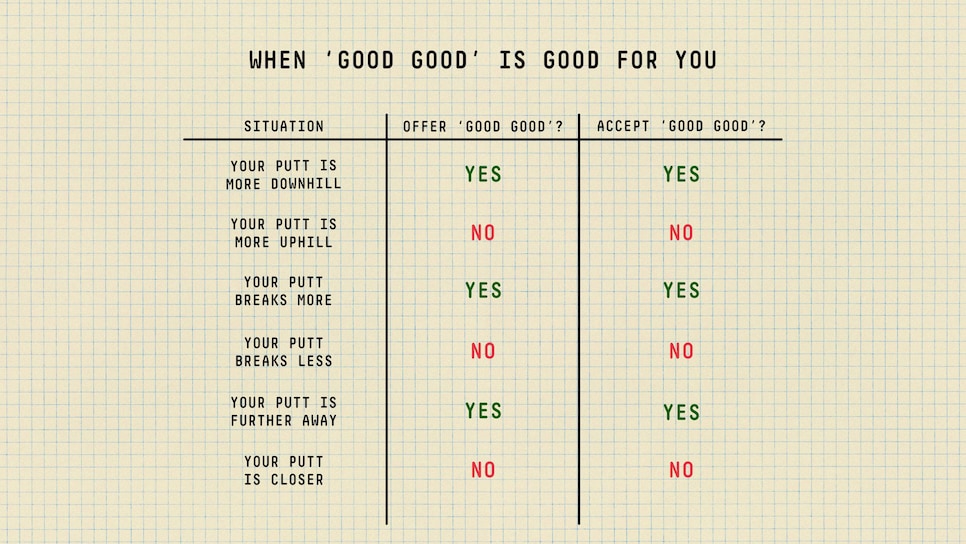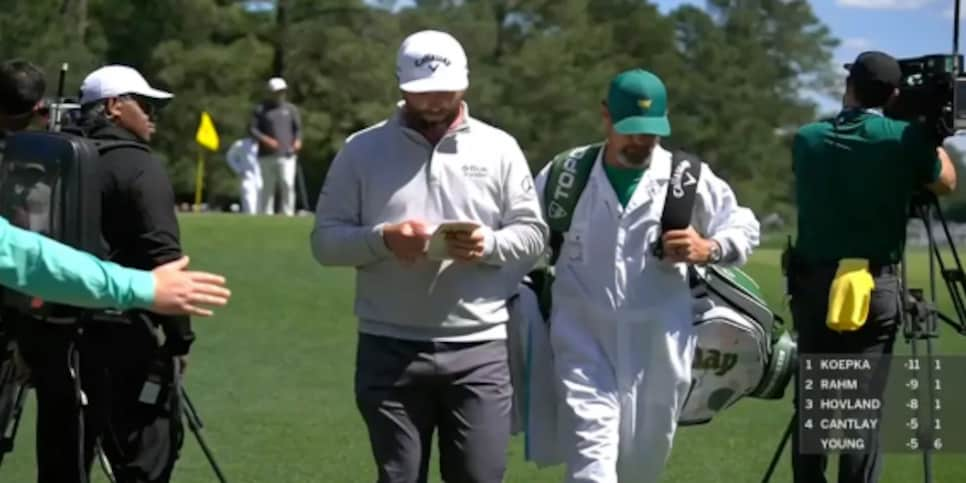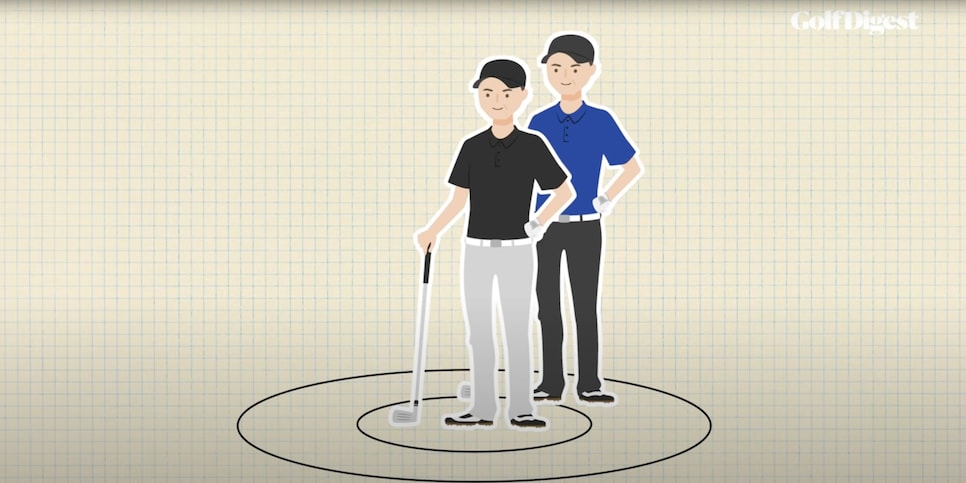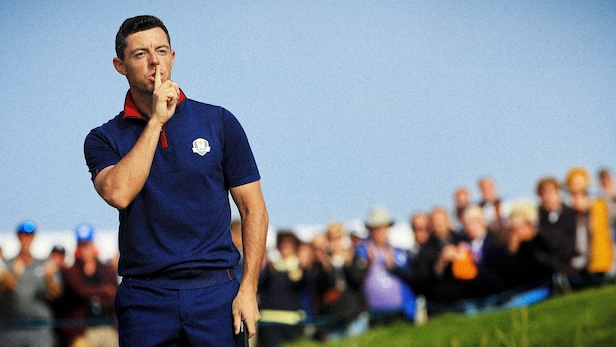There is a dark side to golf strategy and every two years at the Ryder Cup, we see it. These are subtle tactics that spark controversy. They fuel resentment. And sometimes, they can even be enough to win you a point.
This is gamesmanship: a series of strategies pro golfers use that are designed not just to help them play a little better, but to trick their opponent into playing a lot worse. Everything mentioned here is by the letter of the law, legal. None of this stuff is considered cheating. Instead these are kind of etiquette breaches that players can and often do use to get into their opponent’s head.
There are three common mind game tactics that you see flare up during heated match play situations. Tiger Woods and Seve were masters at a couple of these, and that’s what we explore in the latest episode of Golf Digest’s Game Plan, which you can watch below.
1. Giving putts
Probably the most common form of gamesmanship, from the amateur ranks all the way up to the pros, is in the art of conceding putts. Unlike in stroke play where everyone has to finish each hole by literally getting their ball into the hole, in match play, at any point you can end your opponent’s hole for them.
One tactic that has been around for a while is the idea that you should be generous and give your opponents putts early in the match in low pressure situations, and then stop giving them later on, in high pressure situations. The idea is that they’ll be more rusty when you do this, so more likely to miss those putts.
When you crunch the numbers, this strategy doesn’t really make a ton of sense. Pros only miss putts of those lengths about five percent of the time, and most Ryder Cup matches don’t even go 18 holes. So in reality what you’d be doing is guaranteeing them one putt, in exchange for a future putt that probably isn’t going to happen.

A more interesting situation is the topic of “good-good.” This happens when both players have putts of similar length, so they form a kind of truce. But not all putts are created equal. Between two and four feet, your make rate drops by about 0.5% for every inch further away from the hole you are. And
Furthermore, remember that not all putts are created equal. If we use short putt statistics from our friends over at The Stack training aid as our gauge, low handicaps make just under 50 percent of their downhill breaking putts from inside 12 feet, but almost 55 percent of their uphill breaking putts. And if you have a straight uphill putt, that make rate is more than 60 percent. That’s a big difference and something you should pay attention to in these “good-good” situations.

The margins are small, yes, but points are often won or lost in small moments like these. So, here’s a little Good-Good cheat sheet to keep in mind.
 2. Controlling the pace of the match
2. Controlling the pace of the match
Your opponent has an ideal pace of play where they’re most comfortable and in rhythm so you change the pace of the match to make them a little uncomfortable. And there is some evidence out there that shows that works kinda well.
One way is by playing fast. Speeding things up. To march ahead of your opponent like a dog leading a pack, to establish a kind of dominance and subtly give them the feeling that they’re playing slow, and need to rush to keep up. Jon Rahm put on a masterclass with this tactic against Brooks Koepka during the final round of the 2023 Masters.

But the more effective, and frankly, evil strategy is to do the opposite. Hit the brakes. To slow things way down. And this is sadly very effective. Official game tracker of the PGA Tour Arccos found that for every half hour you add onto the overall pace of play, scores get about half a stroke worse.
3. Dominating the Space
Think of any annoying person in your life. There’s a good chance they don’t do a good job of respecting your personal space. It’s the tactic of physically dominating a shared space to make the other person uncomfortable. Seve was the true master at this one, especially in Ryder Cups.
Researchers have found that most people operate with a kind of “comfort ring” around them, that goes from about 1.5 feet to four feet. When somebody gets within that space, and especially when they’re standing behind you, facing your back, we often get really uncomfortable. Our heart rate starts ticking up. Our muscles tense up. Basically it begins to activate our fight or flight response.

In golf you can see it happen on tee boxes a lot. One player getting in another’s personal space or standing really closely right behind them. Seve would do this, and Tiger seemed to do it a lot too, like he was stalking his prey. By invading their space, you’re subtly making your opponent physically and mentally uncomfortable, in the final moments before they have to hit a shot.
This article was originally published on golfdigest.com

